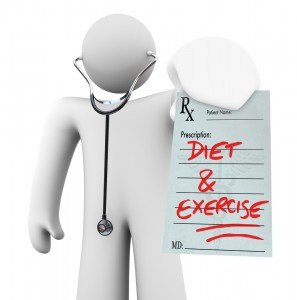 When it comes to being couch potatoes, Americans aren’t alone. Physical inactivity has become a global pandemic. One would be shocked to know that a lack of exercise causes as many as 1 in 10 premature deaths around the world each year — almost as many deaths attributed to smoking!
When it comes to being couch potatoes, Americans aren’t alone. Physical inactivity has become a global pandemic. One would be shocked to know that a lack of exercise causes as many as 1 in 10 premature deaths around the world each year — almost as many deaths attributed to smoking!
Physical Inactivity Directly Linked to Four Major Diseases
A new report estimates about 5.3 million of the 57 million deaths worldwide in 2008 were associated with physical inactivity, largely due to four major diseases: heart disease, Type 2 diabetes, breast cancer and colon cancer. If physical inactivity could be reduced by just 10%, it could prevent about 533,000 deaths a year; if reduced by 25%, 1.3 million deaths could be prevented. If everyone got off their couches and eliminated inactivity altogether, the life expectancy of the world’s population would rise by about 0.68 years (more, if you discount those who were already active), comparable to the effect of doing away with smoking or obesity.
Data was collected on physical inactivity and outcomes of the four major diseases — heart disease, Type 2 diabetes, breast cancer and colon cancer — as well as rates for death from all causes. Overall, the estimates suggest that lack of exercise causes about 6% of heart disease, 7% of Type 2 diabetes, and 10% of breast and colon cancers worldwide.
Exercise has long been known to lower risk factors like high blood pressure, high blood sugar and high cholesterol, which in turn reduces the risk of heart disease and diabetes. Physical activity also keeps heart vessels healthy and helps to prevent blood clots.
As for breast cancer, exercise may protect women by reducing fat — particularly dangerous belly fat, whose metabolic activity may trigger tumor growth in breast tissue. Colon cancer may work differently: researchers believe that exercise helps keep digestion regular and prevents potentially cancer-causing waste from encouraging abnormal growths in the colon.
You Need At Least 150 Minutes of Exercise Each Week
It is recommended that people get about 150 minutes of moderate exercise a week — a half-hour of brisk walking five times a week would count. But a study found that 31% of adults worldwide (1.5 billion people) and 4 out of 5 teens aren’t exercising enough to meet that standard and therefore putting themselves at risk for chronic disease.
Physical Inactivity Rates Associated with Socioeconomic Levels
Rates of physical inactivity were higher in high-income countries than in low-income nations. The Americas were overall the most sedentary region — with 43% of the population not exercising enough — while rates of inactivity were lowest in southeast Asia (17%). It is estimated that sedentary people have a 20% to 30% greater risk of heart disease and diabetes than regular exercisers. But despite the deadly effects of lack of exercise, physical activity doesn’t get the same attention or funding as other health risk factors.
Motivation is Key to Increasing Activity Levels
What kinds of interventions might help people get active? Using signs to motivate people to use the stairs instead of the elevator, for instance, or offering free exercise classes in public places such as parks, especially geared toward women, lower-income folks and the elderly, groups who are less likely to get the recommended amount of exercise. Studies from the U.S., Australia, Belgium, Canada, England and Germany indicate that maintaining streets and improving lighting can boost activity levels by as much as 50%.
Nevertheless, no one disagrees that the world population as a whole must start exercising more — and soon. As soon as you get out of your chair, your blood sugar improves, your blood cholesterol and triglycerides improve, and that’s consistent for all of us. Every time you get up, it is a step closer to becoming healthier/more active. Every time you sit down it gets worse. Exercise the right to save your life.
